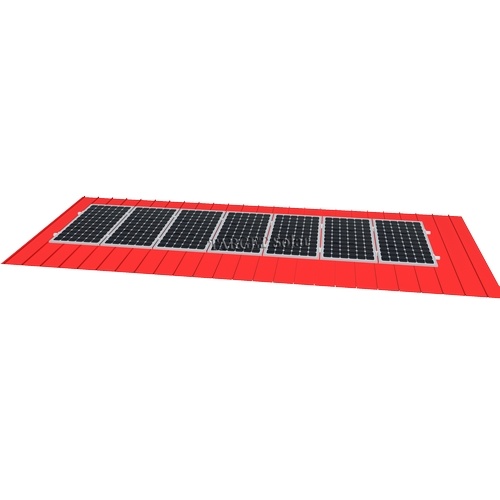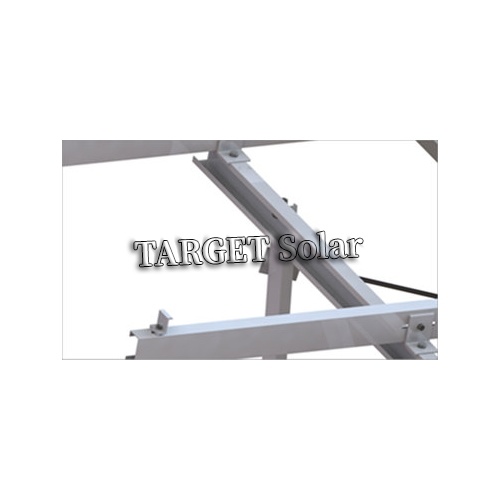Release Time: Apr 27,2025
Ground Photovoltaic Station Supports: Key Factors for Optimal Performance
Ground Photovoltaic Station Supports: Key Factors for Optimal Performance
Table of Contents
Introduction to Ground Photovoltaic Station Supports
The Importance of Quality Supports in Solar Installations
Types of Ground Photovoltaic Supports
Design Considerations for Optimal Performance
Material Selection: Choosing the Right Supports
Best Practices for Installation Techniques
Maintenance Strategie
Ground Photovoltaic Station Supports: Key Factors for Optimal Performance
Table of Contents
- Introduction to Ground Photovoltaic Station Supports
- The Importance of Quality Supports in Solar Installations
- Types of Ground Photovoltaic Supports
- Design Considerations for Optimal Performance
- Material Selection: Choosing the Right Supports
- Best Practices for Installation Techniques
- Maintenance Strategies for Longevity
- Common Challenges and Solutions in Photovoltaic Supports
- Conclusion
- Frequently Asked Questions
Introduction to Ground Photovoltaic Station Supports
Ground photovoltaic stations play a crucial role in harnessing solar energy, and the performance of these systems significantly depends on the quality and design of their supports. Ground supports are the foundational components that hold the solar panels in place, ensuring optimal positioning for maximum sunlight exposure. This article delves into the key factors that influence the performance of ground photovoltaic station supports and offers insights into choosing and maintaining them effectively.
The Importance of Quality Supports in Solar Installations
The significance of well-designed and robust ground supports cannot be overstated. They:
- **Enhance Stability**: Proper supports prevent panels from shifting due to wind or other environmental factors, maintaining alignment and maximizing energy capture.
- **Facilitate Maintenance**: Quality supports allow for easier access during inspections and maintenance, ensuring systems remain efficient over time.
- **Extend Lifespan**: Durable materials and thoughtful designs contribute to the longevity of both the supports and the solar panels themselves.
Types of Ground Photovoltaic Supports
Selecting the appropriate type of ground support system is critical. Here are some commonly used types:
Fixed Tilt Supports
Fixed tilt systems are stationary structures set at a specific angle. They are easy to install and are suitable for locations with consistent sunlight.
Tracking Systems
Tracking systems adjust the angle of the panels throughout the day to follow the sun’s path, increasing energy capture by up to 25%. However, they can be more complex and costly to install and maintain.
Ballasted Systems
These supports use weights, such as concrete blocks, to anchor panels without penetrating the ground. They are ideal for sites where soil conditions are problematic.
Design Considerations for Optimal Performance
When selecting and designing ground supports, it’s essential to consider various factors that can impact performance:
Geographical Location
The geographical location influences wind loads, snow loads, and soil conditions. Understanding these environmental factors is crucial for designing supports that can withstand local conditions.
Panel Size and Weight
The size and weight of solar panels dictate the load-bearing capacity required from the supports. It’s essential to ensure that the chosen supports can accommodate these factors without risk of failure.
Soil Composition
Soil type affects how supports are anchored. For instance, sandy soils may require deeper foundations compared to clayey soils, which can provide more stability.
Material Selection: Choosing the Right Supports
Material choice is fundamental to the durability and performance of ground supports. Common options include:
Aluminum
Lightweight and resistant to corrosion, aluminum is a popular choice for solar supports. Its strength and ease of installation make it ideal for various applications.
Steel
Galvanized steel offers high strength and durability, making it suitable for regions with extreme weather. However, it requires protective coatings to prevent rust.
Composite Materials
Composite materials combine the benefits of different substances, providing a balance of strength and lightweight characteristics while resisting corrosion.
Best Practices for Installation Techniques
Proper installation of ground photovoltaic supports is essential for ensuring their performance and longevity. Adopting best practices can significantly enhance outcomes:
Site Preparation
Before installation, thorough site preparation is necessary. This includes clearing debris, leveling the ground, and assessing soil conditions.
Alignment and Orientation
Accurate alignment and orientation of the supports are critical for maximizing sunlight exposure. Utilize tools such as GPS and leveling instruments to ensure precision.
Secure Anchoring
The method of anchoring supports greatly influences stability. Consider utilizing concrete footings or driven piles, depending on soil conditions and local regulations.
Maintenance Strategies for Longevity
Regular maintenance is vital for extending the lifespan of ground supports and ensuring solar panels function efficiently:
Visual Inspections
Conduct routine visual inspections to identify any signs of wear or damage. Look for corrosion, loose components, or structural issues.
Cleaning and Upkeep
Cleaning the supports and surrounding areas can prevent the accumulation of dirt and debris that may hinder performance.
Timely Repairs
Address any identified issues promptly. Whether it’s tightening loose bolts or replacing corroded components, timely repairs can prevent more significant problems down the line.
Common Challenges and Solutions in Photovoltaic Supports
While installing and maintaining ground supports, several challenges may arise. Here are common issues and their solutions:
Soil Erosion
Soil erosion can undermine support stability. Solutions include planting vegetation around the supports to hold soil in place and utilizing erosion control mats.
Weather Impacts
Extreme weather can damage supports. Incorporating flexible designs and using materials rated for higher loads can mitigate risks associated with severe conditions.
Cost Management
Balancing quality and cost is always a challenge. Investing in materials that offer longevity may initially be more expensive but can save costs in the long run through reduced maintenance needs and replacement frequencies.
Conclusion
Ground photovoltaic station supports are integral to the successful operation of solar energy systems. By understanding the various aspects of support design, material selection, installation techniques, and maintenance strategies, we can ensure optimal performance and longevity of these critical components. As the demand for renewable energy sources continues to grow, focusing on quality ground supports will not only enhance energy capture but also contribute to the overall efficiency and sustainability of solar power systems.
Frequently Asked Questions
1. What are the most common types of ground photovoltaic supports?
The most common types include fixed tilt supports, tracking systems, and ballasted systems, each with distinct advantages based on site conditions.
2. How do soil conditions affect photovoltaic support installation?
Soil conditions determine the necessary depth and strength of the support foundations, impacting overall stability and performance.
3. What materials are best for ground photovoltaic supports?
Aluminum, galvanized steel, and composite materials are popular choices due to their strength, durability, and resistance to environmental factors.
4. How often should photovoltaic supports be inspected?
Regular inspections should be conducted at least biannually, with more frequent checks during extreme weather conditions.
5. What maintenance practices are essential for ground supports?
Visual inspections, cleaning, and timely repairs are critical for maintaining the integrity and performance of ground photovoltaic supports.
Related News
May 07,2025
Exploring the Durability of Color Steel Tile Roof Photovoltaic Brackets: A Comprehensive Guide
Exploring the Durability of Color Steel Tile Roof Photovoltaic Brackets
Table of Contents
1. Introduction to Color Steel Tile Roof Photovoltaic Brackets
2. Understanding the Materials Used in Photovoltaic Brackets
3. Key Factors Influencing Durability
3.1. Corrosion Resistance
3.2. Weather Resistance
3.3. Structural Integrity
4. Installation Best Practices for
May 01,2025
Understanding Ground-Mounted Photovoltaic Power Stations: A Sustainable Energy Solution
Ground-mounted photovoltaic power stations are an essential component of the renewable energy sector, particularly in the realm of solar energy. These systems consist of solar panels that are installed on the ground rather than on rooftops or other structures. This configuration allows for larger installations, making them suitable for utility-scale energy production.
One of the primary advantages
Apr 27,2025
Ground Photovoltaic Station Supports: Key Factors for Optimal Performance
Ground Photovoltaic Station Supports: Key Factors for Optimal Performance
Table of Contents
Introduction to Ground Photovoltaic Station Supports
The Importance of Quality Supports in Solar Installations
Types of Ground Photovoltaic Supports
Design Considerations for Optimal Performance
Material Selection: Choosing the Right Supports
Best Practices for Installation Techniques
Maintenance Strategie







